Wolfgang Van Halen and Matt Bruck on the future of EVH Gear: “Ed left a lot of ideas for us to develop – we are committed to delivering all of them”
From the upcoming SA126 semi-hollow to legacy replicas and radical new spec sheets: Wolfgang Van Halen and Matt Bruck give us the skinny on what's next for the brand carrying the torch for Eddie's gear legacy
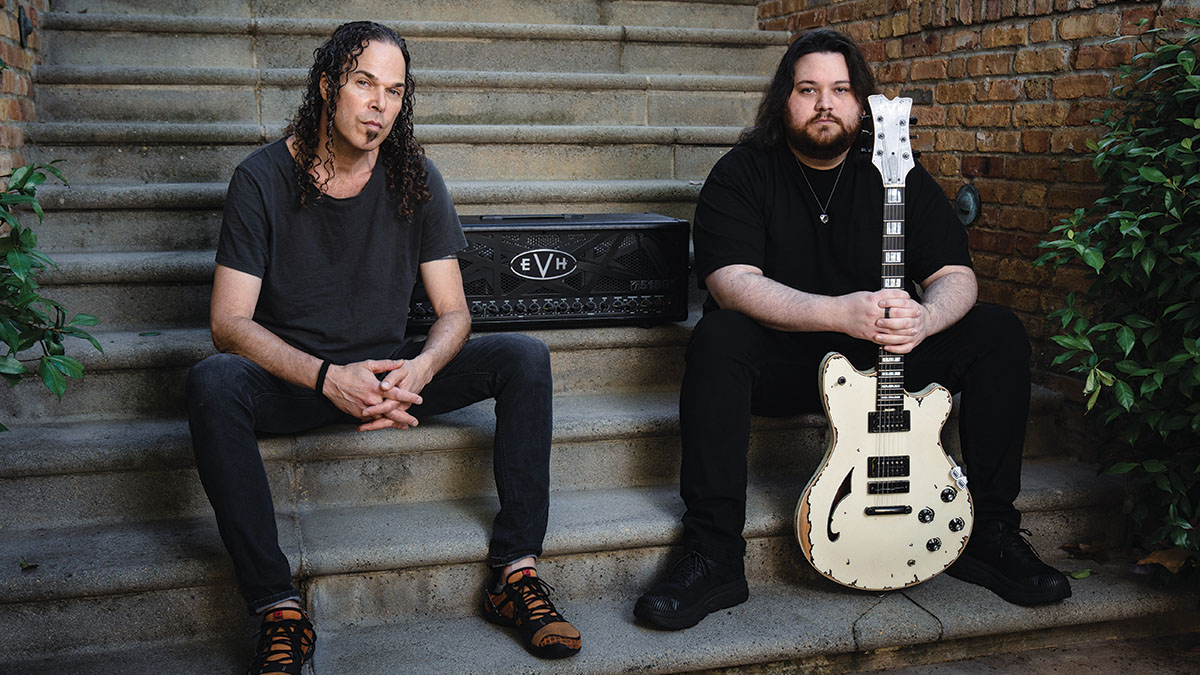
Shortly after guitarists got over the initial shock of Edward Van Halen’s passing on October 6, 2020, many wondered what would become of the EVH brand, which had been the guitar legend’s primary avenue of creative expression ever since the inception of EVH in 2004.
The electric guitars and guitar amps produced by EVH were truly the products of Ed’s imagination, innovation and drive for perfection. Many feared that without Ed, the EVH brand would cease to exist.
The announcement that EVH would continue under the leadership of Ed’s son Wolfgang alongside his partner in the brand, Matt Bruck – who played an instrumental role in EVH’s success from its very beginning – was a relief to those who had closely followed the company’s progress.
Wolfgang and Bruck worked with Ed on a daily basis, and no-one knew more about the guitarist’s preferences, ideas and standards of excellence or were as faithful to maintaining his vision. The highly dedicated and talented team that supported Ed and Bruck at EVH also remained intact. Equally importantly, before Ed passed he laid out a longterm plan to ensure that his vision would live on for many decades to come.
“Ed left a lot of ideas for us to develop,” Bruck says. “We are committed to delivering all of them. We worked with Ed for a very long time, and we know what he would want. Ed indeed lives on through his music and the brand, which lives in all of us now, and it’s up to us. It’s also up to every fan – everybody who is involved and appreciates it. We all are the flame now. I don’t see EVH or Ed’s legacy diminishing.”
Over the last two years since Ed’s passing, EVH has continued to thrive and grow. Core products like the Wolfgang guitars, 5150 III amplifiers and Striped Series guitars have become timeless modern classics, while new products like the 5150 Iconic series amps and 5150 guitars have helped EVH build a following with a new generation of players.
Wolf Van Halen’s band, Mammoth WVH, has also given fans a sneak peek at upcoming EVH products like the SA126 semi-hollow electric (with the “126” paying tribute to his dad’s birthdate) and EVH Wolfgang basses, which are currently going through road testing just like Ed did with his signature gear.
All the latest guitar news, interviews, lessons, reviews, deals and more, direct to your inbox!
Just a few days after Wolf’s exhilarating performance for the Taylor Hawkins Tribute concert at London’s Wembley Stadium, Wolf and Matt Bruck talked with us about what lies ahead for the EVH brand.
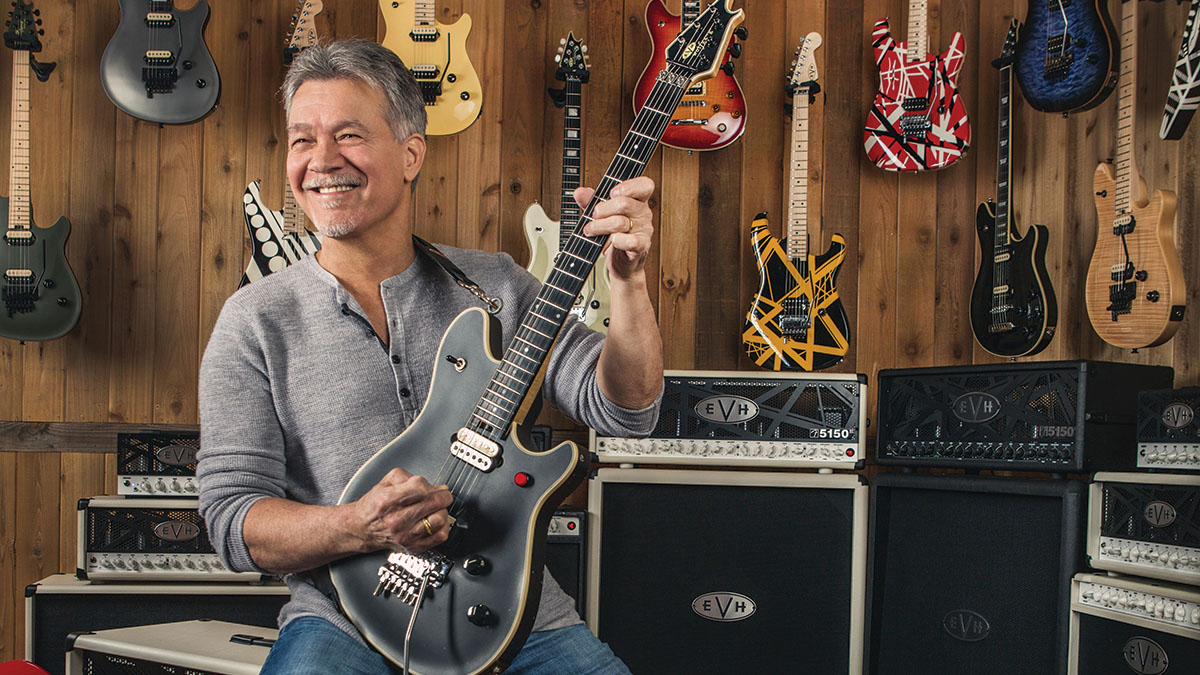
Collectively, the two of you had almost 60 years of experience of working with Ed. Matt, you started working with Ed as his guitar tech in 1990 and were his business partner at the EVH brand from the very beginning in 2004.
Wolf, ever since you were a child you were absorbing your dad’s knowledge and thoughts just by being around him on a daily basis. And then you played in the band with him for more than 15 years, in addition to your own experience developing personal instruments with Chip Ellis for the Van Halen tours.
Matt Bruck: “We’re in a unique position, with me having worked side-by-side with Ed for 30 years, and Wolf being his son and having worked with him professionally since he was 15.”
Wolfgang Van Halen: “Matt is a little too humble. I don’t know if people are aware of just how important and integral Matt has been to the company since its inception. He was always there with my dad, working with him, half-and-half the whole time collaborating and helping make everything fucking work.
“If Matt won’t tell you how important he is, I will. That’s why the brand is still doing as well as it is, in continuation of my dad’s vision, and how we see things moving forward. We’re here to preserve that legacy and keep it going as well as it’s always been and more.”
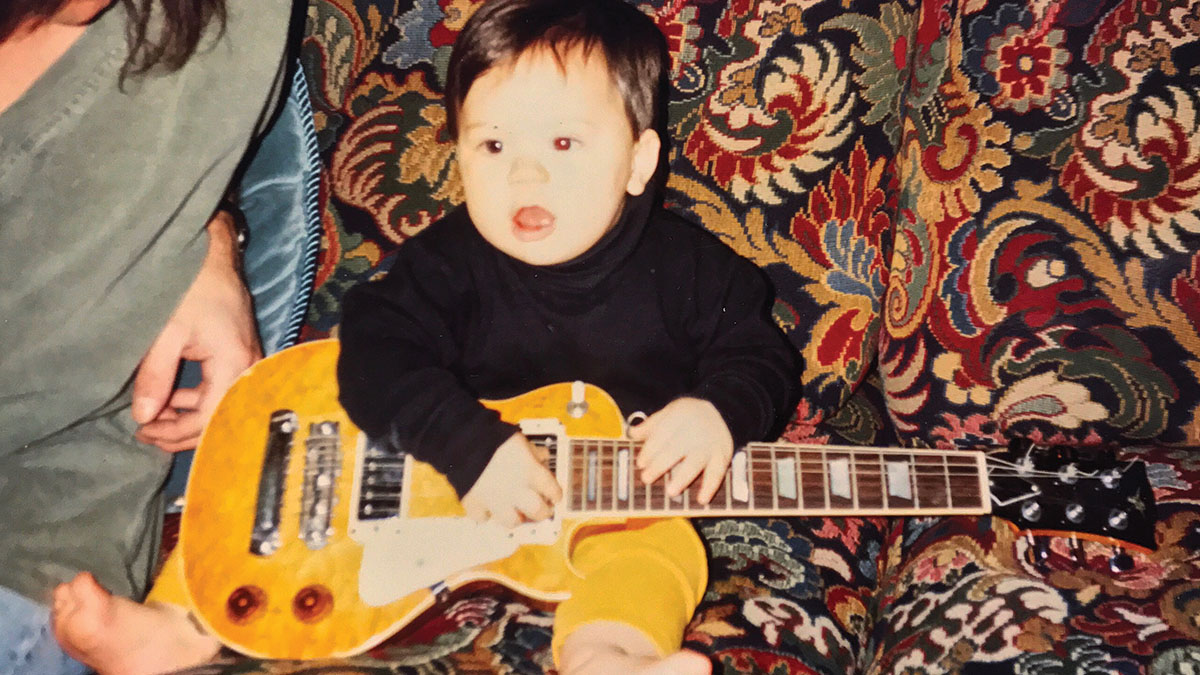
Bruck: “I don’t play my position for any other reason than making sure we stay authentic. I ran every play with Ed for 30 years. When we work on things now, I swear to God that Ed is still right next to me. A lot of time I think to myself, 'What would Ed think?' – and the answer is always pretty instant. It comes from having worked with him as much and for as long as I did. My goal is always to make it right, make it so Ed would go, Fuck yeah! It’s as simple as that. That’s the watermark."
“But EVH is more than just us. It’s also the team at FMIC we have working with us. We’re so fucking lucky because everybody is super talented and takes the job very seriously. [Senior Project Engineer and Master Builder] Chip Ellis knows. [VP Category Management] Jon Romanowski knows. [EVH Product development manager] Matt Brown knows. [EVH principal amp design engineer] James Brown knows. When they give us something or we give them something, we all know the EVH ethos and stick to it. We’re a family.”
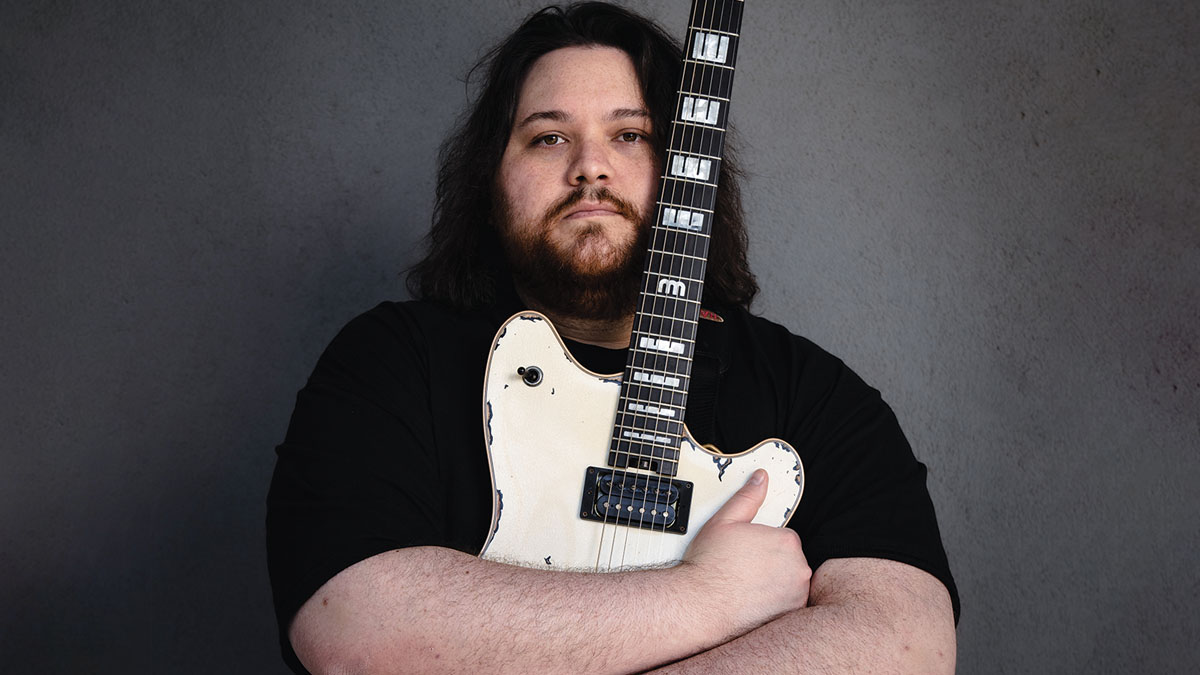
Van Halen: “That’s the thing. There’s so much love and dedication behind everything we do. We know what Pop wanted because he told us what he wanted.”
Bruck: “We know that at the end of everything it falls into the players of EVH. We want them to say, 'Man, this is what I expected from EVH.'”
Van Halen: “No matter how close we all are, we’re all fans as well. We know what fans would want because that’s what we would want.”
We always look at things like a bullet-pointed list. The top-tier item is, 'Is this authentic to Dad’s legacy and what he strived for?'
Wolfgang Van Halen
Bruck: “That’s what we focus on, being true to the cornerstones and ethos that made Ed who he was and how he went about things.”
Van Halen: “We always look at things like a bullet-pointed list. The top-tier item is, 'Is this authentic to Dad’s legacy and what he strived for?'”
Bruck: “And we know when he’d be happy with something or not. The other thing is our devotion to giving everything our all. There is no one in the EVH ecosystem who says, 'Yeah, I did good enough.' It’s always about challenging ourselves. If you do that, you do right by the group and by Ed’s legacy. We have the big picture in our heads, but mostly we focus on the task at hand every day, make our very best efforts to get through that and move on to the next task.”
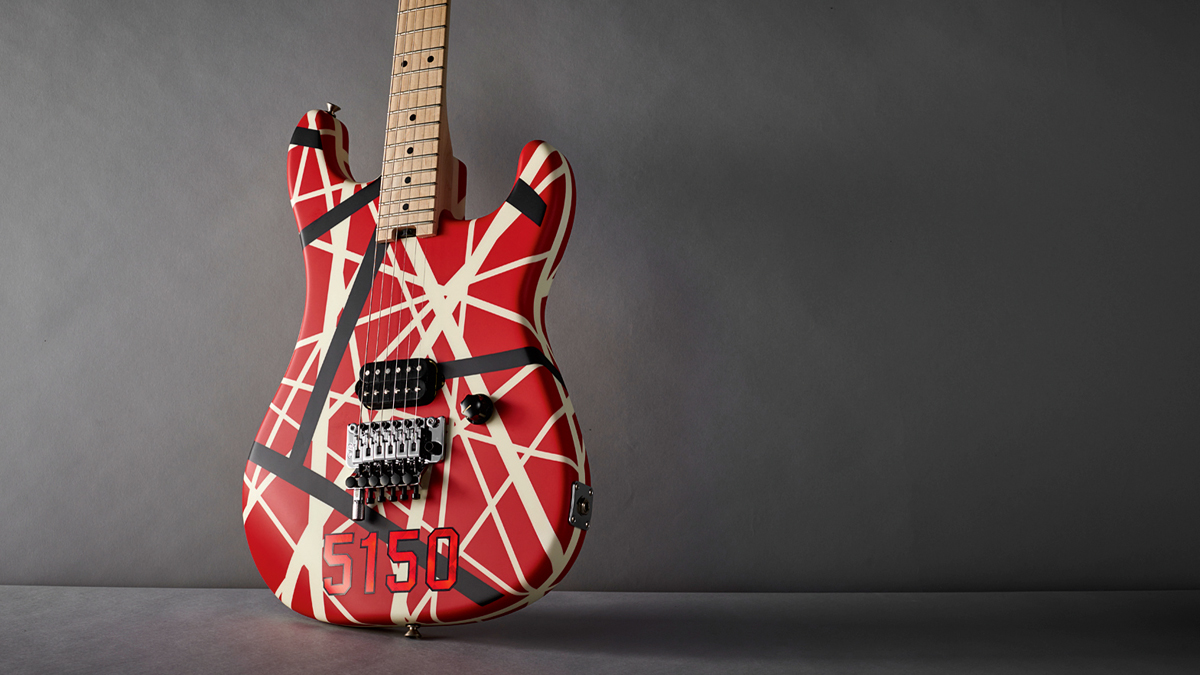
Wolf, a while back you gave a sneak peek at the SA126 semi-hollow electric and the new Wolfgang bass guitar, both of which are being road-tested with your band Mammoth WVH. Are those the next instruments we’re going to see from EVH?
Bruck: “The immediate things you’re going to see are the ’78 Striped Series Relic and the MIJ (Made in Japan) Fujigen EVH Signature models. There’s a lot in the queue. The SA126 is still a work in progress. Wolf is like his father in that he liked something that was classic but wanted a higher level of performance from it.
“Wolf used a 335 until we were able to put the SA126 together. The concept was to create a hybrid guitar that had a classic foundation fused with high performance features that players today are used to from EVH.
“Any time you take something from one guitar and fuse it with something from another guitar, you get something new. Credit to Wolf, I was there for his performance at the Taylor Hawkins Tribute concert in London, and I never heard a semi-hollow guitar sound like that before in my life. That was our entire idea and goal.”
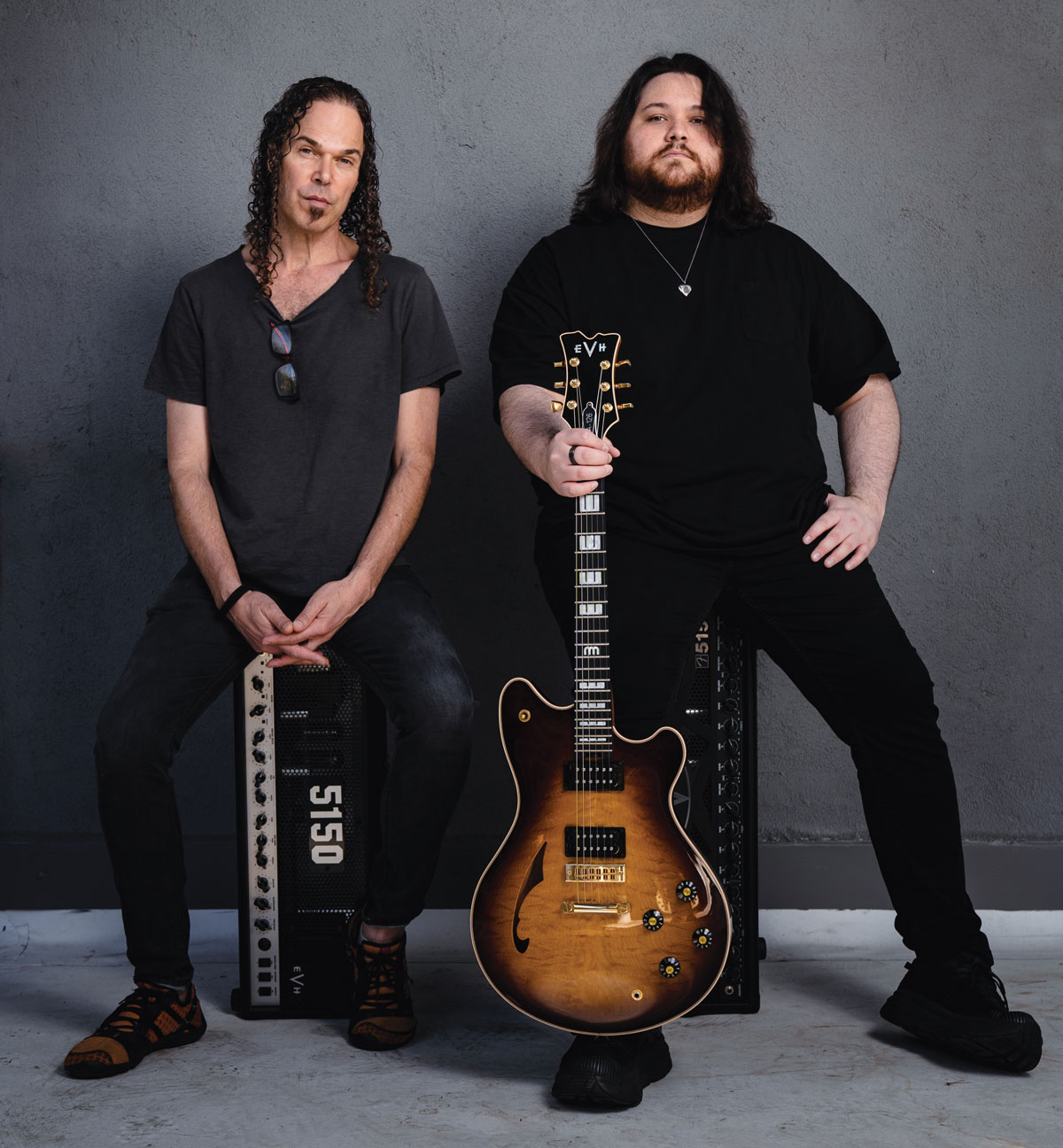
Van Halen: “A lot of people thought I was playing Dad’s Wolfgang relic guitar from the 2015 tour.”
Bruck: “The worn finish is fashioned after that guitar. This guitar would not have existed without Wolf, and it was an intense collaboration between Chip Ellis, who has built guitars for EVH for almost 20 years, myself and Wolf. We’re not done with it. Ed always had what he called the crash testing phase.”
Van Halen: “One part of the process has already been road-tested. We worked with Tim Shaw and Chip Ellis on the pickups, and I think we’ve landed on something perfect.”
Bruck: “They’re not the first edition of pickups that the guitar came with.”
I’ve never heard a guitar that sounds like the SA126, and that was our goal. It’s Wolf’s unique instrument
Matt Bruck
Van Halen: “I toured with the guitar starting in January. The original pickups mirrored the heat of a classic 335.”
Bruck: “It was like a traditional PAF humbucker wind.
Van Halen: “We boosted the output a bit. When I was playing it at home after the tour I noticed that I had to kick it into the red channel on the 5150 III amp to get the dirt that I really wanted for a solo. The pickups through the blue channel just felt lacking. I almost felt bad about it, so I called Matt up and said, 'Hey, can we work on the pickups?'”
Bruck: “I was like, 'Yeah! that’s what crash testing is all about.'”
Van Halen: “So I was like, 'Great. I’d love to see how much more we could squeeze out of this.'”
Bruck: “That’s very much the same dynamic I had with Ed. We would kick out a prototype and he’d sit with it so he could form an opinion. Usually, he would want to push for something because the guitar didn’t quite have all he wanted. I let Wolf know that was what this period of time was all about.
“How lucky are we? Our team is amazing. Between Chip Ellis and Tim Shaw and the rest of the team there is a dedicated collective effort to bring about the result. I’ve never heard a guitar that sounds like the SA126, and that was our goal. It’s Wolf’s unique instrument.”
Van Halen: “It was exciting how we finally landed where we did. We had the original pickups, the ones I wanted that were a little bit hotter, and ones that were extra hot. That middle hotness was where we found the perfect balance. It has clarity along with that dirt that you’d never expect from a semi-hollow. The hottest pickups lost that definition and got fuzzy and boomy in a not-too-nice way.
“It was very much like what Dad would do, 'Give me too much and then we’ll dial it back.' It’s amazing how great that guitar sounded at Wembley through just a stock EVH 5150 III 6L6 50-watt head, and I was playing on just the blue channel the whole time. I didn’t need to pump it up on the red channel for the solo. I think that was so fucking awesome.”

Bruck: “The clean tones on Hot for Teacher were the neck pickup with the volume dialed down.”
Van Halen: “The volume for the neck pickup was at 3 or 4. I just flipped between the bridge and the neck pickup, because that’s how Dad played it on the 1984 album with the Flying V.”
The neck on the SA126 also has a 24.75-inch scale length, like the Flying V.
Bruck: “The profile on that neck is like, shredder. It’s real fast.”
Van Halen: “You can’t find any semi-hollow guitar on the market that has a neck like that.”
Wolf and I will do anything to defend the integrity, authenticity, quality, innovation and everything anyone has come to know and appreciate about this brand
Matt Bruck
Bruck: “Most semi-hollow guitars have necks that are like a baseball bat. We used some ’78 and ’79 EVH necks as a reference.”
Van Halen: “Didn’t we use the Bumblebee neck as a starting profile?”
Bruck: “We put everything down on a table, and Wolf chose aspects of several necks that he liked.”
Van Halen: “It was like, 'How wide and thin can we go?'” [Laughs]
Bruck: “Once Chip rendered the neck, Wolf said, 'Can you take a little more off?' There was still some hand-sanding going on the day before Mammoth left on tour. Chip had the necks out on a table on the driveway at 5150, and he was sanding them down. It’s so much the way things have always been done around here.”
Van Halen: “Chip is really the one who makes the guitar world go around at EVH. I cannot stress enough how important Chip Ellis is to the process.”
EVH is much more than a typical brand. Most brands aren’t the fruit of this genius innovator that had enough substance and innovation to warrant a brand
Matt Bruck
Bruck: “Chip is to the guitars what James Brown is to the amps. And we wouldn’t be the same without Jon Romanowski and Matt Brown and the support we get from FMIC executive management. EVH is much more than a typical brand. Most brands aren’t the fruit of this genius innovator that had enough substance and innovation to warrant a brand.
“It’s a special blessing beyond words because it is Ed’s baby and because of the people involved. Wolf and I will do anything to defend the integrity, authenticity, quality, innovation and everything anyone has come to know and appreciate about this brand. We are hell-bent on maintaining that. It’s our duty to be faithful custodians of EVH.”
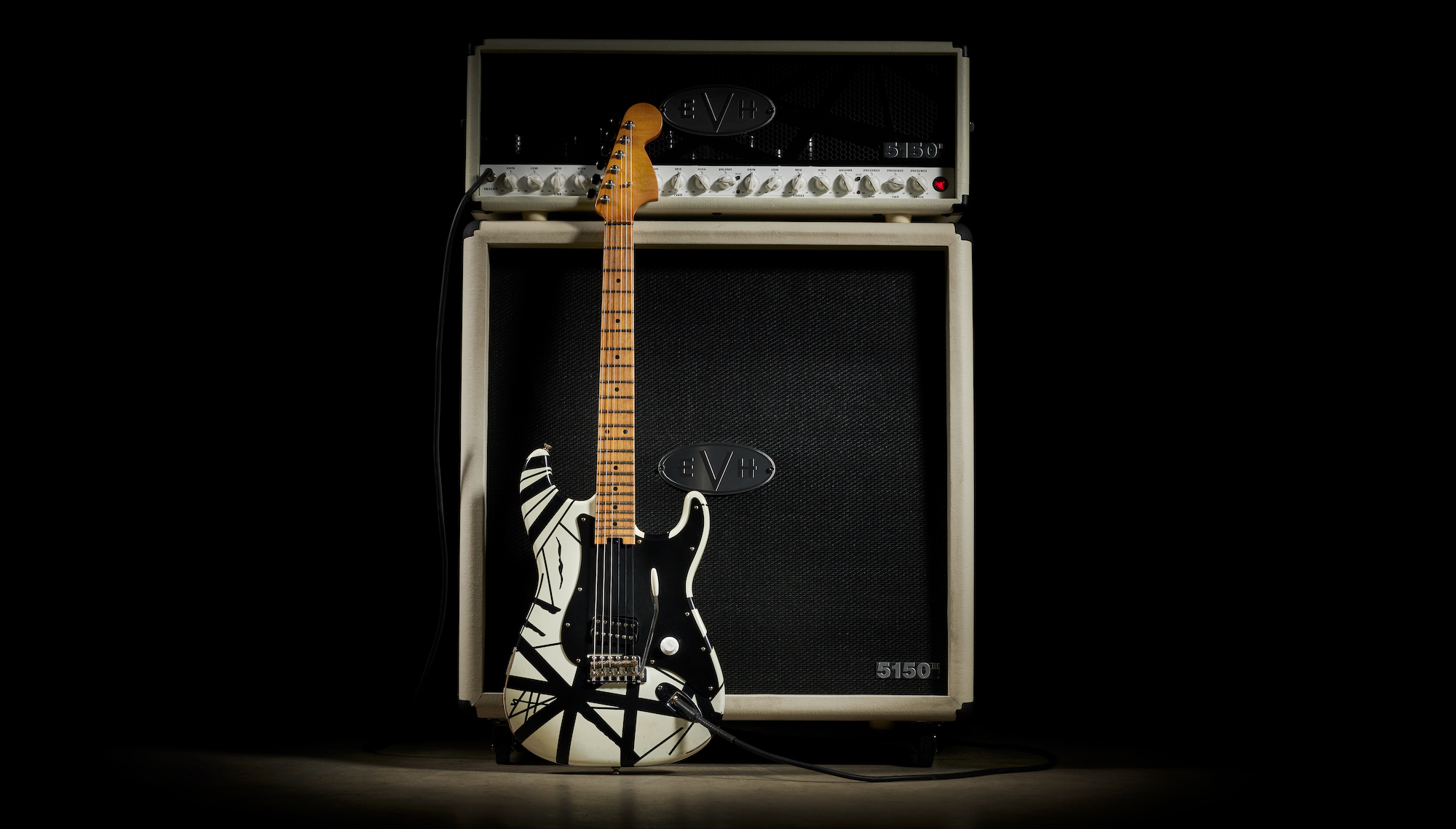
Van Halen: “It’s much more than defending and preserving EVH. It’s also our duty to push things even further, to cement a legacy that’s already been cemented 15 times over.”
Bruck: “… and grow it with new ideas, like what we’re doing with the SA126. Ed also left a lot of ideas, and we would be remiss to not bring them to fruition for everyone to enjoy, but we can’t do them all at one time.”
The process with the SA126 is so reflective of what happened with the EVH Wolfgang. That took a while too – it was road-tested and the pickup development took a long time.
Van Halen: “I think Dad would love the SA126. Some people say, 'Ed would never play shit like that,' but we all know where he got the pickup from for the original Frankenstein.”
Exactly, from his early ’60s ES-335. And he used a 335 to record his solos for And the Cradle Will Rock... and Big Fat Money. People have no idea how wide a range of instruments Ed used, particularly in the studio.
Bruck: ”He also loved bass instruments, whether they were baritones or basses. There were two songs [Good Enough and the unreleased track I Want Some Action, recorded for 5150] where he put a .060- or .058-gauge string on the low E and tuned it down because it needed that low-end for the riff, but he also needed the other five regular strings for playing chords and solos. I’d ask him, 'What’s the tuning on that?' and he’d go, 'I don’t know.'”
With Ed, there were never any rules. He’d have a sound in his head and he’d do whatever it took to make it work
Matt Bruck
”For half of the first Van Halen album, Ed used a guitar that didn’t have a tremolo. There’s a huge place for stop-tail guitars. More people play stop-tails than guitars with locking tremolos. We dig both and we want to show people what we can come up with.
”With Ed, there were never any rules. He’d have a sound in his head and he’d do whatever it took to make it work. As a result he had this encyclopedic collection of all these wacked-out, crazy experimental guitars that he modified or built. He was in perpetual motion. The EVH brand has to reflect that to maintain authenticity. We’re always willing to take on a challenge or something new and figure out a way to do it. That is how you made Ed happy.”
The SA126 is a great next logical step for the company. It fits in with the company’s progression, and it’s a little bit different.
Van Halen: ”Yeah, it’s something that hasn’t been offered before, but now it will. It’s another door opening.”
Bruck: ”We’re also stoked about the ’78 Striped Series Relic. We put a lot of time into that. There’s a video that’s going to be coming courtesy of Chip that’s all about how Ed strung that guitar. Ed had this whole process of stringing the guitar so the non-locking trem would stay in tune even after doing radical dive bombs. You have to keep the string from twisting, wind up on some of the tuning pegs instead of down, oil the brass nut…”
Van Halen: ”And what he did might not work for somebody else, but if you want that it’s important to show people how he did it, so they can do it.”
Bruck: ”We have that information, and we want to share that 'inside' stuff with the world.”

Tell us more about the Fujigen guitars.
Bruck: ”The Fujigen factory in Japan, which is now also Fender Japan, will be making MIJ Series EVH Signature models, including his signature Stealth and a tribute to the 2015 tour white relic, which will have a white finish but will not be relic’d. We will also continue to make the USA models in Corona, California, but the Fujigen guitars are next in the queue.
”Ed’s history with Japanese guitars predates Van Halen’s records. He played a bolt-on Flying V and an Ibanez Destroyer during the club days, which were both built by Fujigen. People also don’t know that Ed did a lot of experiments on Japanese Strats before and after the first record. We’re super excited to do something with Fujigen and for the Japanese market. People in America and around the world will be able to access those models too.”
Van Halen: ”They rip.”
Bruck: ”And then there’s a whole bunch of other very cool stuff down the road. We have a three-year plan that’s always in play. Not everything is cemented. Things sometimes have to get moved around, but any project that gets delayed is always brought back when the time is right. While we’ve talked mostly about stringed instruments, we’re equally as focused on the tube amplification side of things.”
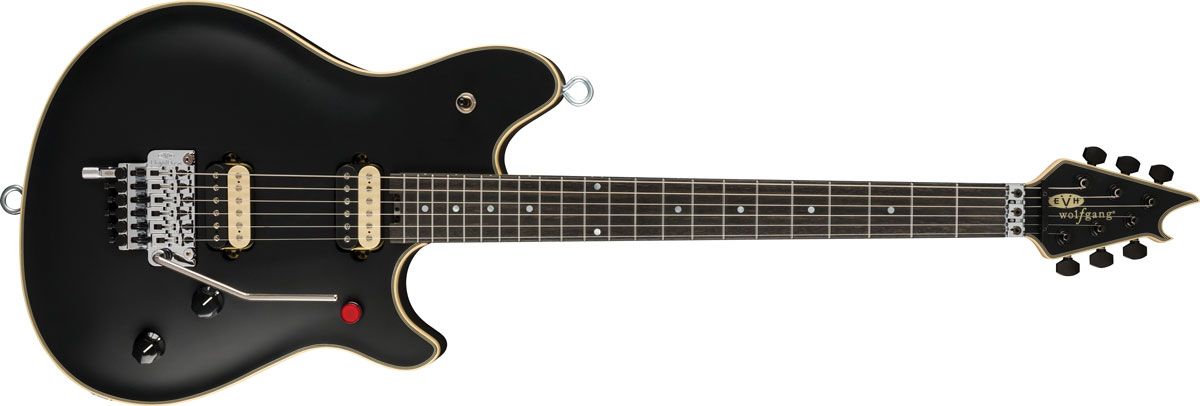
How involved was Ed with the new 5150 Iconic series amps?
Bruck: ”Ed was involved and created the foundation of that amplifier and gave it to James and the team to develop. Again, go back to our ecosystem and human resources. James Brown was the original engineer on the very first 5150 amp. How lucky are we that we have him onboard?
”We went after James and recruited him after our principal amp engineer Howard Kaplan decided to retire. James is now apprenticing Alexander Shibilski, so we also have a new generation coming up behind James on principal engineering for our amplifiers.”
Ed never grew up with a lot of money. He never had money for pedals, which is why he focused on getting his sound out of the amp
Matt Bruck
The 5150 Iconic series offer very good value for the price.
Bruck: ”Ed never grew up with a lot of money. He never had money for pedals, which is why he focused on getting his sound out of the amp. Because of that, we wanted to offer an amp that was more within people’s reach without sacrificing the tone or quality. Ed started it and grew it, and we finished it. Ed had other things to focus on in the final lap.
”I remember A/B’ing the 5150 Iconic against every other 5150 amp that we had ever put out, and in my view it was able to hang with everything respectably, which was the goal. I’m incredibly proud of it and the combos that are going to be available for Iconic. Even if you don’t have a lot of money you’ll be able to afford a combo that just smokes. Releasing the Iconic was a real moment. We hoped that people would like it, and we feel good about the way it’s been received.”
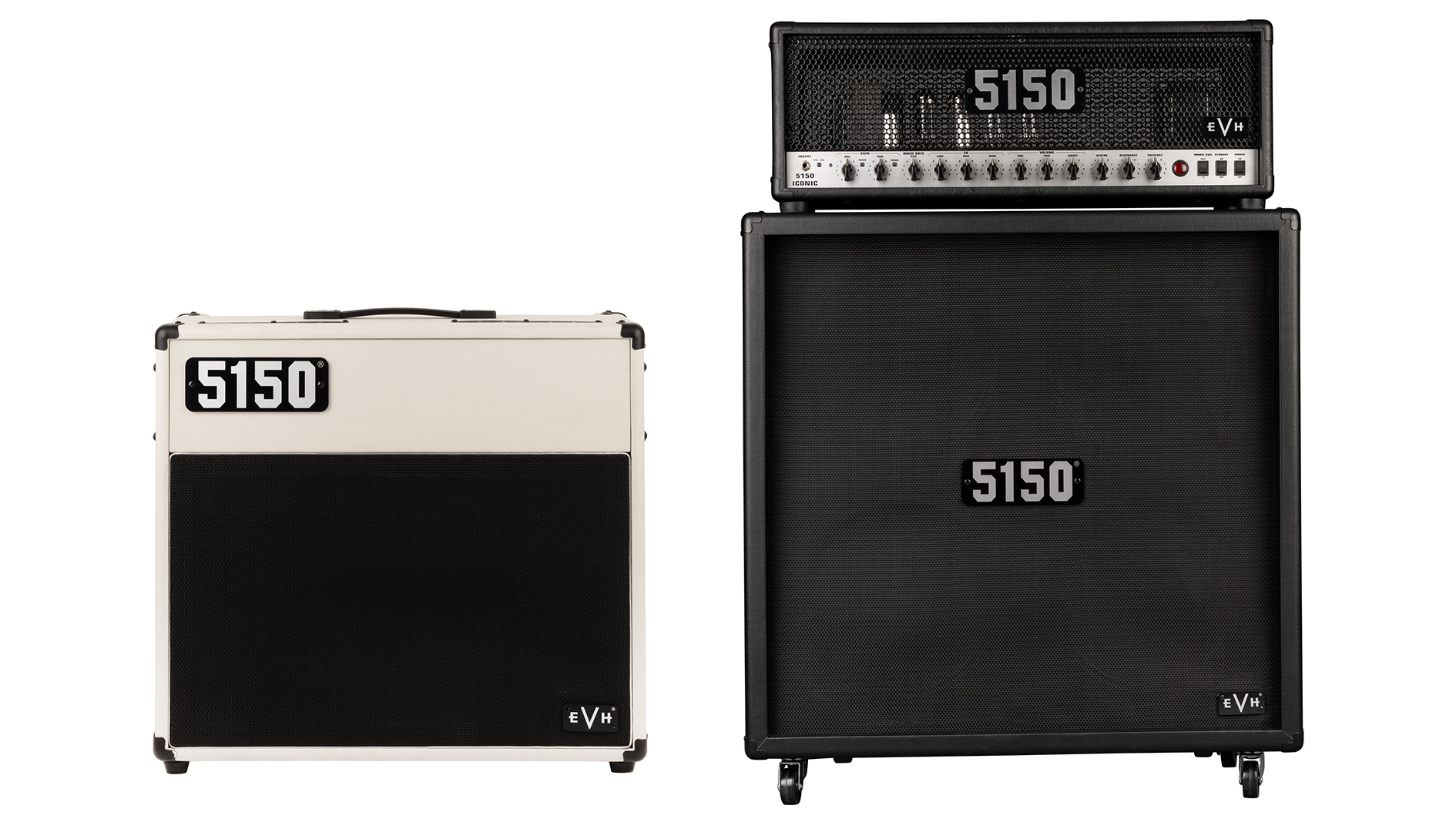
Ed’s original Kramer 5150 guitar that he played in the ’80s is immensely popular. How close are we to finally seeing a replica of it?
Bruck: ”It’s part of a conversation. It’s one of the most important guitars that’s ever graced rock and roll. But then again there are a lot of Ed’s other guitars that we would like to do. For one, I’m a huge fan of the Star body.
”The 40th anniversary of that guitar was in 2020. The 40th anniversary of the Circles guitar was in 2021. This year is the 40th anniversary of the Kramer. To the best of my knowledge, and people may split hairs with me, Ed made that guitar in 1982.
”But to answer your question, it’s in the queue. We just can’t do everything all at one time. The replicas are special. We have never thought, 'Nah, we don’t need to do that.' There are also some really cool things going on in the 5150 Series of guitars that Wolf has suggested.”
We want to embrace old and new ideas alike and do them all well
Matt Bruck
Van Halen: ”I really do like the 5150 Series guitars. It’s one thing to do a replica, and it’s cool to play a guitar that looks like the ones my pop played, but there’s also something really special to me about being able to reflect yourself in the instrument. The non-striped issues of those guitars are a really exciting proposition.”
Bruck: ”Wolf is a shredder who listens to a lot of the new breed players, and he thought it would be cool if we offered 24-fret models with stop-tails and locking trems. There’s a whole new generation of players who are really into 24-fret guitars. We just got our first prototypes of the 24-fret 5150 Series guitars. And once again, they still need to go through development and a little bit of refinement, but they’re very cool!”
Van Halen: ”Primarily, I’m not a locking trem guy.”
Bruck: ”…So there will be hardtail versions of those guitars, too. We want to embrace old and new ideas alike and do them all well. We want to provide people with quality instruments that sound great to let them find their own inspiration and express themselves with good musical tools.”
The biggest thing to me that distinguishes EVH products from other legacy products is that the guitars and amps are for everybody, not just someone playing in a Van Halen cover band.
Bruck: “It’s cool if you’re in a Van Halen band, because you can get that sound right away using EVH gear. But it’s also cool to see what people are doing with the gear that is not Van Halen-esque and is their own thing.”
Van Halen: “You can take everything that Dad worked with through his entire career and make it your own.”
Bruck: “It’s like, look at what Meshuggah does with EVH gear. That’s killer! Does that sound like Van Halen? I don’t think so. Or what about what Kurt Alison with Jason Aldean or what Jack White does with it? Or what Scott Ian does with 5150s. That’s really cool.”
Van Halen: “Our buddy Paul Sidoti who plays for Taylor Swift is playing Wolfgangs and 5150s. Everybody can find use with EVH gear. It’s not made just so you can play I’m the One and have it sound right, although you could do that if you want. [Laughs]”
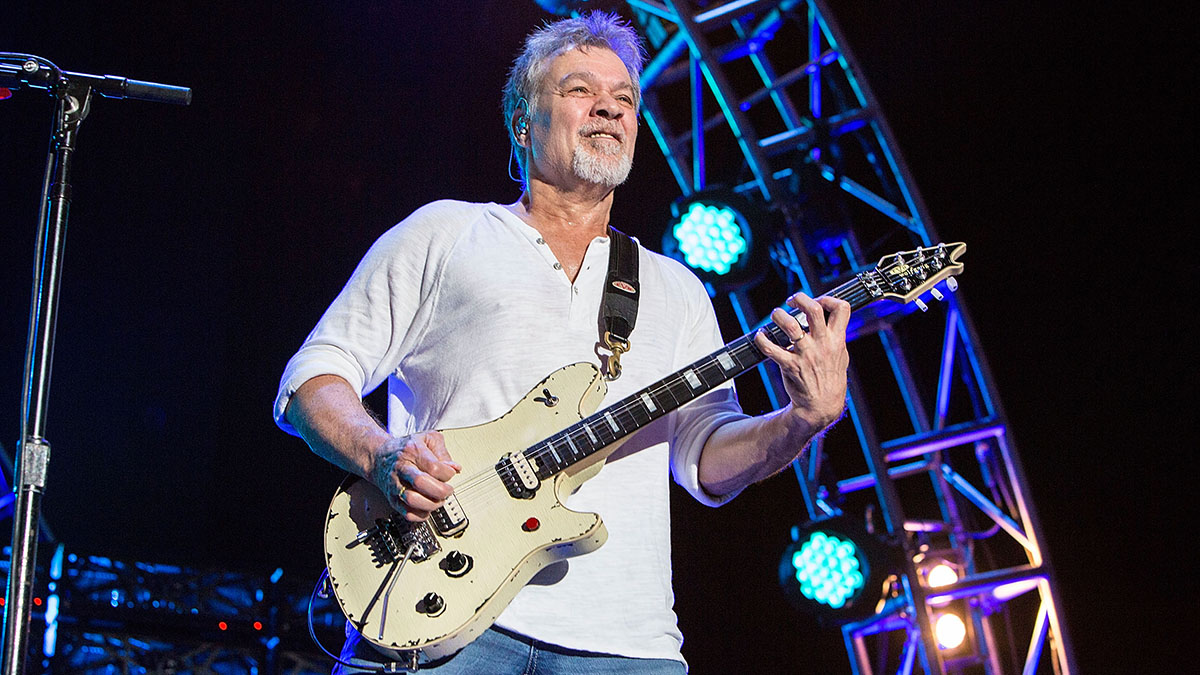
Who are some of the key players at EVH?
Bruck: “Jon Romanowski and Matt Brown. They are huge fans, they’re smart, super-talented, hard workers, experienced, committed and good guitar players! Along with them, Chip, James and now Alexander Shibilski, who is coming up as the apprentice to James, are the main people.
“Howard Kaplan is now retired, but he was one of those guys as well, and we still consult him all of the time. Mike Ulrich and Brian McLeskey were key, worked with Howard and were involved with the development of the 5150 III amps at the outset, which have magical circuits.
“Along with Wolf and myself, that’s the core team. Mike Tempesta in Artist Relations and Richard Bussey in Accessories do a really great job. We also get great support from Justin Norvell and Max Gutnik in executive management. It’s made all the difference in the brand’s success. And credit to Jeff Cary too, who was pivotal in building the core team from the start.”
“We are all super-tight, and we talk constantly for all kinds of reasons. Ed was always a stickler for communication. He thought it was so important to be connected and communicate and not take anything for granted. Anybody who ever worked for him, their hearts got invested. It’s the same with Wolf’s organization. If you work for a Van Halen, your heart gets involved and your dedication follows. We would not be who we are without the sum of our parts.
We’re kind of like this homemade, backyard shop to the nth power, but we exist within Fender
Matt Bruck
“The brand is so special because of the people who make it up and the guy who is responsible for its existence. Chip and James are pillars. They cannot be duplicated. They each have 20 and 30 years, respectively, of experience working with us and know exactly what makes us tick.
“We’re kind of like this homemade, backyard shop to the nth power, but we exist within Fender. Fender’s manufacturing capabilities are insane! I’m so proud of the quality of our products and the integrity of our circuits and our build quality.”
“We were with a previous company, and there were problems with setups and guitars staying in tune. Ed was an advocate for his customers, and he said that if you set up a guitar correctly it should stay in tune. He said that even the cheapest guitar could play as good as the most expensive guitar if it was set up right.
“To show them, he took a guitar and stretched the strings out and did all of the little things that he did when he restrung a guitar. When he was done he threw it across the boardroom, picked it up and played it and said, 'See. It’s fucking in tune!'
“Fender has always respected that by taking the time and doing setups the way they’re supposed to be done – the way Ed wanted them done. Who wants to buy a new guitar, take it out of the box and find that it plays like shit and the intonation is off? It’s hard enough to make guitars. Why not go the extra step at the very end to make the guitar as good as it can be with a great setup?
“It’s really simple. We just want to treat people the way that we would want to be treated. We want to be detailed in what we present. We all play. All of us. We’re product people. If the product is great and we get enough people interested in it to actually try it, we feel confident that the product will meet with acceptance once it has an opportunity to be evaluated by a player.”
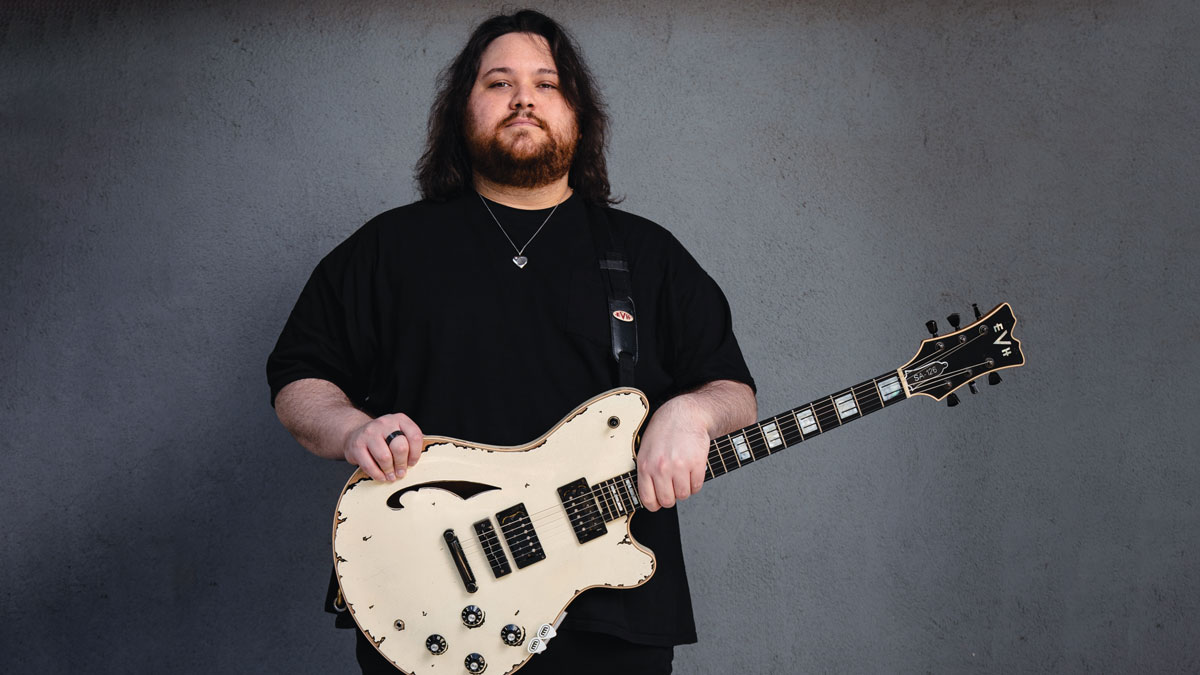
Van Halen: “We’ve built this family over the years at EVH that has continued to be the same people.”
Bruck: “They have had long-standing relationships with Ed through EVH. Ed was incredibly demanding, but they all agree that he was amazing to work with. It was never a walk in the park. You would get challenged down to the last minute, and everything would go down to the wire because he would ask you to outperform constantly.
“Ed challenged all of us to get to what he wanted. He had this philosophy where he’d always ask for more than he needed. He’d explain that if you gave him more than he needed, then he could confidently dial it back to what he really required. It’s extra reserve, versus coming up short for what you need. He knew that if he had a little more than necessary, he could dial back to what he truly was looking for in capacity. He constantly pushed us to deliver more.”
I don’t think people realize just how challenging it is to run a guitar company today.
When Ed first went to Fender we said, 'Man, if we get 20 years under our belt we’ll be a legacy brand.' It was always our goal to leave an indelible mark like Fender and Gibson
Matt Bruck
Bruck: “The guitar business after Covid is different than what it was before. There are a lot of challenges that we are subject to – supply chain delays, cost increases, shipping delays, tube shortages – but we do what’s necessary to prevail. It’s not easy to run a guitar company.
“When Ed first went to Fender we said, 'Man, if we get 20 years under our belt we’ll be a legacy brand.' It was always our goal to leave an indelible mark like Fender and Gibson. That was in 2004, so we’re only a year from reaching that milestone. Now I’m saying, 'All right, let’s go for 40 years!
“Let’s go as far as we can without compromise and continue this beautiful journey and amazing fascination that the world has with what Ed did. And let’s move forward with great new ideas from Wolf. Everything is on the table – the past, present and future. We will always do things with quality and integrity. If you do all that, things will always be okay.”

The world loves Van Halen’s albums, Ed’s playing and the songs that he wrote, but the EVH guitars and amps are another incredible gift that he left all of us. I don’t think people truly appreciate all of the hard work that he and all of you put into building the brand into what it is today. Ed didn’t just slap his name on a product and call it a day. He put a lot of effort into every single product and detail.
That’s the thing about my dad. He never half-assed anything. That particularly goes for the brand
Wolfgang Van Halen
Van Halen: “That’s the thing about my dad. He never half-assed anything. That particularly goes for the brand.”
Bruck: “Ed left us buckets and buckets of ideas. Some are already finished and just need a little extra tweaking to bring them along. Some people have seen the upcoming bass on the road with Wolfgang’s band, and we also have some new pickups on the way. These are pickups with different voicings and variations that have been sitting on the shelf for six or seven years.
“Nothing can replace having Ed here. But we are so fortunate for all of the people involved with this brand. Everybody takes it as serious as serious gets. It’s been two years since we’ve lost Ed, we’ve worked our asses off and personally I feel that we’ve done a good job.
“We’ve done a job that Ed would be proud of and approve of. It’s important to have that peace within yourself. That’s how you keep on the right track. So far it feels like most people have said, 'Good job.'”
Chris is the co-author of Eruption - Conversations with Eddie Van Halen. He is a 40-year music industry veteran who started at Boardwalk Entertainment (Joan Jett, Night Ranger) and Roland US before becoming a guitar journalist in 1991. He has interviewed more than 600 artists, written more than 1,400 product reviews and contributed to Jeff Beck’s Beck 01: Hot Rods and Rock & Roll and Eric Clapton’s Six String Stories.




